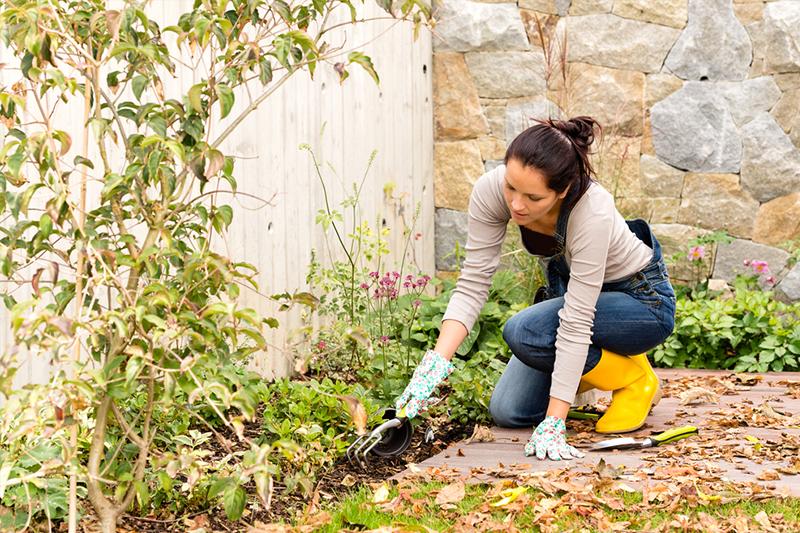Westchester County Winter Garden Tips

Protecting your garden for the winter months helps encourage beautiful and healthy growth for spring. Felice Landscaping’s professionals have years of knowledge and experience as it relates to Westchester landscaping best practices. We’re sharing our tips with you so that you can maintain your lawn and garden in cold weather.
Protect young or delicate plants from the wind using a burlap sack, plastic bag, upside-down flower pot, cardboard box, or any other similar object you have on hand. Just be sure to weigh down lighter protectors with a rock or brick to prevent them from blowing away in the wind.
Trees that are less than a year old should be protected by a tree cover. This will not only help protect them during harsh winter storms but will also keep away any critters looking for an easy meal.
Remove dead leaves and cut away dead stems from plants and the ground before the cold weather hits. This will help prevent mold and deter insects from laying eggs and spreading once the warmer weather returns.
Add a layer of mulch to help maintain a consistent temperature and protect against frost and cold. Spread a three-inch layer of mulch over the ground surrounding the plants. Once laid out, cover with netting or tree branches to help protect from the wind.
Don’t worry too much about the snow, it acts as an insulating layer and actually keeps the plants warm and protected. Where you do need to take caution is when heavy snows weigh down tree and bush branches or smaller, more delicate plants. After a heavy snowfall, knock as much snow off the weighted tree branches and bushes as you can. The heavyweight can cause damage from snapping limbs. Keep an eye on the weather so that you know when to go out to cover plants or move them to a protected and covered area.
Aerate your lawn during the fall to give it room to breathe and help encourage root growth over the colder months. Doing so will also help reduce the amount of thatch that built up in summer and early fall. Excess thatch makes lawns susceptible to disease and insects and decreases its resistance to drought. Aerate just before adding fertilizer to the soil and roots so that they can absorb the healthy nutrients and generate a thicker lawn once it wakes up in the spring. Felice Landscaping professionals recommend aerating the day after it rains, while the grass is still damp, but not soaked.
Fertilize your lawn in the fall to give your grass a little boost of nutrients before it becomes dormant during the winter. Do this after you have aerated so that the nutrients can absorb more easily. This will help keep the grass looking green throughout the winter. The nutrients from the fertilizer will help promote healthy root growth and produce and come spring, the lawn should be thriving with fewer weeds, pests, and diseases. Once the weather cools down to the 50s is the best time to think about adding fertilizer. If frost has already hit for the year, then it’s not worth adding fertilizer, as it won’t be able to do its job.
Decrease the height of your mower gradually as you prepare your lawn for winter. Two inches is an ideal height for winter lawn. Over the last two to three mowings before the final cut, reduce your lawnmower notch by notch to reach that height. Cutting the lawn to the right height is important. Too long leaves it susceptible to disease and damage from freezing and thawing. Too short encourages weed growth and welcomes insects and diseases, which can cause bald patches.ay for more information.